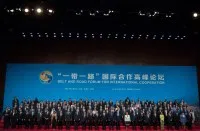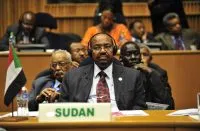The US has threatened the possibility of sanctions against Myanmar for over a year but it is only now that Washington has made good on its threat. According to reports, the US Treasury “imposed sanctions on four Myanmar military and police commanders and two army units”. The US has accused Myanmar of “ethnic cleansing”, a wantonly strong accusation which indicates that further sanctions or tariffs may follow on from the ones announced yesterday.
The proximate justification for the sanctions is the protracted crisis in Myanmar’s Rakhine state where recent years have seen one of the many conflicts within Myanmar’s wider 70 year Civil War flare up in a highly visible fashion. The Buddhist and Muslim populations of Rakhine have been engaged in what are undoubtedly atrocious acts against one another. While little verifiable statistical information about the number of dead or displaced exists (in spite of fake news indications to the contrary), it would appear that many local Buddhists have systematically targeted the Muslim population, known as the Rohingya, while it is also true that a number of foreign Takfiri militants have infiltrated the local Rohingya population in order to take advantage of a genuine humanitarian crisis. Crucially, there is no evidence and even less of a motive to suggest that the central authorities of Myanmar, the Tatmadaw are directly responsible for the crisis in Rakhine.
Of course, none of this matters to the US in the same way that the issue of Andrew Brunson (the US national accused of conspiring with anti-Turkish terrorists) hardly causes anyone in Washington to lose sleep. In Turkey’s case, the Brunson matter was simply invoked by Washington so as to create the optics of a situation that would allow the US authorities to sanction and impose tariffs on a long time ally without having to answer too many domestic critics. In the case of Myanmar, the timing of the sanctions betrays the true US intention and strategy.
In November of 2017, China presented Myanmar and Bangladesh (where many Rohingya fled) with a peace process whose early stages have already been implemented. According to the first ever Chinese authored peace process for foreign partners, three steps would be taken to ensure a lasting return to peace and normalcy in Rakhine. First of all, local authorities were to take positive steps to de-escalate local tensions, something that Beijing acknowledged had already begun as of late 2017. Secondly, Myanmar and Bangladesh are to work constructively to re-house and normalise the citizenship status of Rohingya refugees. This process is ongoing and while at times difficult is nevertheless proceeding as smoothly as such a difficult process realistically could. Finally, China pledged to work as an investment and development partner with both Myanmar and Bangladesh to improve the material conditions of Rakhine and surrounding areas effected by the crisis in order to bring long term peace through prosperity.
The key therefore to understanding the timing of the present US sanctions on Myanmar is through understanding Washington’s present relations with China rather than its relations with Myanmar. The US and its western partners have long expressed thinly veiled indignation regarding the fact that after helping Aung San Suu Kyi attain the somewhat ceremonial post of Myanmar’s State Counsellor, the country has pivoted back to China as a major economic partner after a brief window of time when it appeared that Myanmar was looking west in order to lessen perceived over-dependence on Beijing.
After promoting Aung San Suu Kyi as a symbol of peace, the west has experienced a kind of “buyers remorse” as her elevation to an official position has changed little in respect of the daily running of government in Myanmar while more importantly the status quo of Tatmadaw (military) rule has not only reconciled with China but enhanced relations with Beijing.
Against this background, the US sanctions are self-evidently designed to accomplish the following:
-Embarrass China by promulgating a narrative designed to indicate that its peace process has been flawed or insufficient
-In trying to embarrass China, the US will be trying to galvanise much of the Muslim world to name and shame the Tatmadaw for committing atrocities that were in fact committed by civilians or para-militants
-Put pressure on Myanmar’s already fragile economy in order to force China to inconveniently plough even more investment into the country in order to avoid a wider economic recession
-Attempt to make China appear as an unattractive partner as the clear implication the US is sending is that those who work with China will pay the price in the form of sanctions and/or tariffs.
In the short term and not least because the crisis in Rakhine state is deeply misunderstood, even by those with genuine humanitarian concerns, the US will likely have scored some soft power points against China, especially in certain parts of the Islamic world where a narrative about Rohingya Muslims being uniquely victimised has taken precedence over reports on the more nuanced realities of the genuine crisis. But in the long term, the US is allowing its own mask to slip by demonstrating that its sanctions and tariffs against both friend and rival alike are merely designed to strengthen America’s newly protectionist economy at the clear and present expense of others.
While conventional wisdom and many statements from Donald Trump would indicate that the US is attempting to use sanctions and tariffs to force other nations to open their markets to more US goods, the fact that the US is in a trading war with China just as Beijing opens up domestic markets to more foreign goods and capital than at any time in modern history, along with the fact that the US has sanctioned and placed tariffs on its NATO “ally” Turkey, one of the few large economies with which the US has a trade surplus, indicates that the US is up to something more than trying to force more US goods into more foreign markets.
Instead, it would appear that in preparing the US to become less reliant on any form of trade and to instead develop a semi-closed Japanese style economy, the US is working overtime to strengthen the position of the Dollar (the opposite of what one would want to do in order to increase the attraction of one’s exports) through a combination of negative speculation against foreign markets which is compounded by tariffs and sanctions against any and all rivals and erstwhile partners in addition to a phased divestment of foreign capital from foreign markets along with gradually increasing interest rates.
These steps which the US is taking in the open are not the kind of steps which would lead to an opening up of the world to American goods - certainly not in the short term and in many respects not in the medium term either. Instead, America’s actions indicate that quite unlike America’s rhetoric, the US is not interested in “winning” a trade war in the traditional sense but is instead looking to place ‘fortress America’ in a strong position to be a more self-sufficient market place complete with a strong currency, all the while America’s competitors have to readjust their strategies upon losing the once reliable US market while simultaneously having to hike interest rates and cutting local investment due to the continued depreciation of the majority of currencies throughout the developing world.
In the short term, this means that multiple economies including China will have to readjust their long term strategies away from exports to an increasingly closed and hostile US market. At the same time, developing nations will look towards a more open China to both take out lines of credit from the Shanghai financial sector as well as looking to get their goods on Chinese shelves in increasing numbers in order to trade their way out of the Dollar debts that US monetary policies are intentionally rising.
Therefore, in the short term, the new US strategy puts pressure on the developing world as a whole which technically includes China (according to the World Trade Organisation and China itself) to rapidly realign both its financial and trading strategies for the foreseeable future. In the long term however, the US is oddly doing much of the world a favour as the mask of American economic openness has slipped under the un-apologetically “America first” policies of Donald Trump. As a result, China is now in a strong position (growing pains and all) to foment a post-new world order of free trade predicated on the interests not of Wall Street but on the shared interests of developing nations throughout Asia, Africa and Latin America.
In this sense, the US is rapidly pushing for the inevitable creation of two rival global economic blocs: one led by China based on the win-win free trading principles of the One Belt-One Road initiative and the other led by the US and an increasingly small group of dependants with an overarching focus on an increasingly self-sufficient US market whose trade is mostly conducted with economies who are generally more stagnant than China and its new partners.
In this sense, while the US is presenting many difficulties to the rest of the world due to its combination of sanctions, tariffs, divestment and high interest rates, in the long term the US is helping to pave the way for China and its partners to autonomously develop a new geo-economic consensus in spite of rather than because of or in partnership with the increasingly unreliable USA.




